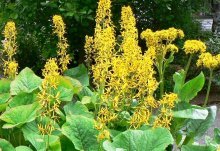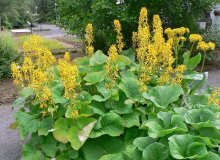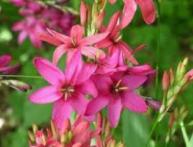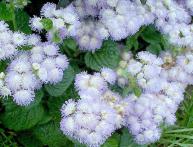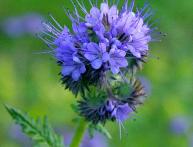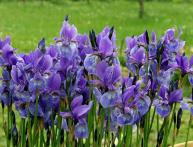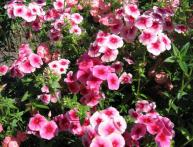Buzulnik planting and caring for a flower in a garden
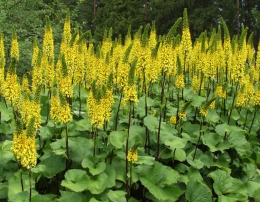
Buzulnik is a plant that is quite widespread in natural conditions in Asia, Africa and Europe. There are more than 150 species of this herbaceous plant in the wild. perennial. At least 40 species grow in the natural conditions of Siberia, the Far East, and the Caucasus. Some species attracted the attention of flower growers for their decorative qualities, since they are not only capable of long-term flowering, but have leaves that are decorative in shape and color. In addition, buzulnik does not require much effort from gardeners when planting and caring for it.
Content:
- Brief description of the buzulnik plant
- Choosing a place for a buzulnik, planting
- How to care for buzulnik in the garden
Brief description of the buzulnik plant
The scientific name of the buzulnik is ligularia. Translated from Latin, ligularia is a tongue. The plant received its name due to its reed flowers, which are quite brightly colored. The genus Buzulnik belongs to plants of the family Asteraceae. Wild species are perennial herbaceous plants with powerful rhizomes. Many species are distinguished by fairly tall, tall stems and peduncles reaching a size of 120 - 130 cm.
For the most part, it prefers to grow in moist soils in forests or near water bodies. It has large leaves, more than 50 cm in diameter. They have both solid and carved plate shapes. They are located alternately on the stem.The color of the leaves can be any shade of green; there are species with reddish, purple leaves. There are species in which one side of the leaf blade is brown or purple, the other is green. Some species may have colored cuttings.
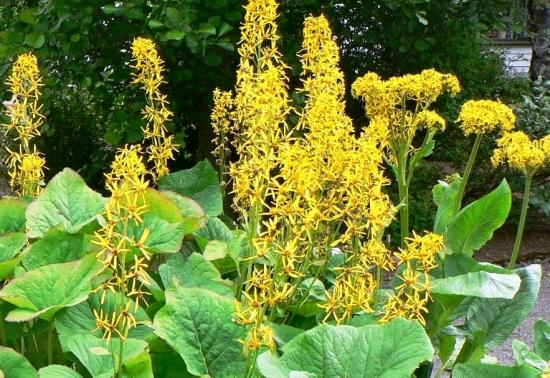
The flowers are represented by bright and fairly large marginal flowers in the form of reeds and small tubular middle flowers. The flowers are collected in inflorescences - baskets. In turn, the baskets are combined into inflorescences:
- paniculate
- racemose
- thyroid
In some species the baskets are arranged in a single order. There are species with a flowering period of 4 to 8 weeks, and there are those that bloom at the end of June and bloom until frost. Cultivated and how ornamental plant, and as a folk medicine. It has gained popularity among flower lovers as a very spectacular flowering perennial plant that can grow in the shade. Therefore, it can be planted in an area in the shade of tall trees and buildings, where other beautifully flowering plants do not take root.
Choosing a place for a buzulnik, planting
Buzulnik is a fairly large and majestic plant. In order for it to please the eye with its flowers and very showy leaves, it must grow in certain conditions, preferably very close to natural ones.
Lighting
Almost all types of buzulnik prefer to grow in shade or partial shade. In bright sun, their growth may slow down, and leaves and flowers lose some of their decorative effect. Therefore, it is preferable to choose natural or artificial partial shade or shade. Buzulnik If planted in bright, direct sun, it will need constant, deep watering on a regular basis.
Video about the buzulnik plant:
Soil and planting
Buzulnik is most likely demanding not so much on the composition and mechanical characteristics of the soil, but on its moisture content. If it is not possible to plant it close to a pond on well-moistened soil, then it is better to choose the dampest place on the site or provide the plant with abundant watering. When planting, it is advisable to add a sufficient amount of fertilizer so that the buzulnik feels good in its permanent place for several years. Typically, this plant can remain in one place for up to 20 years. Heavy clay soil and temporary flooding do not harm many types of buzulnik. Planting material for buzulnik can be:
- seeds
- divided bush
The plant is planted with seeds in the spring, from mid-May, or in the fall, from mid-September to mid-October. Before planting, the area is dug up using a spade bayonet. Complex fertilizer is applied simultaneously with digging. The distance between plants is from 0.5 m to 1.0 meter. When propagated by seed, the buzulnik will bloom in the fourth or fifth year. By dividing the bush, you can plant buzulnik in the spring, but if necessary, this can also be done in the summer. To do this, you will have to cut off the ground part and plant the bush. Such a plant will bloom only the next season.
How to care for buzulnik in the garden
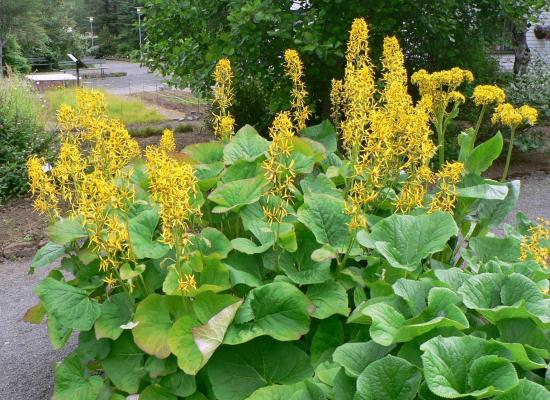
Planting care begins in mid-spring. After priming completely thaws, the soil must be freed from dried plant debris and thoroughly loosened. If necessary, water and mulch with peat or compost.In summer, the main care is to regularly maintain soil moisture; if the summer is dry, then the buzulnik needs abundant watering every three to four days. To retain moisture, immediately after watering, mulch the soil.
If plants grow on poor soil, then organic fertilizing can be applied once every two years, and mineral fertilizing can be applied annually in the spring, and when flowering occurs, once every two weeks, until the end of August.
If there is no need to collect seeds, then as soon as the flowers wither, they should be cut off so that they do not reduce the decorativeness of the plant. Before the onset of winter, the ground part must be cut off, and the plant on top mulch layer of humus or peat. No other additional shelters are required. The plant has practically no pests. Its tough leaves can only be chewed by garden slugs. Their number in the garden can be reduced with the help of special homemade traps. With proper planting and care, buzulnik becomes the most spectacular plant in the garden.
Interesting information about the vegetable garden

